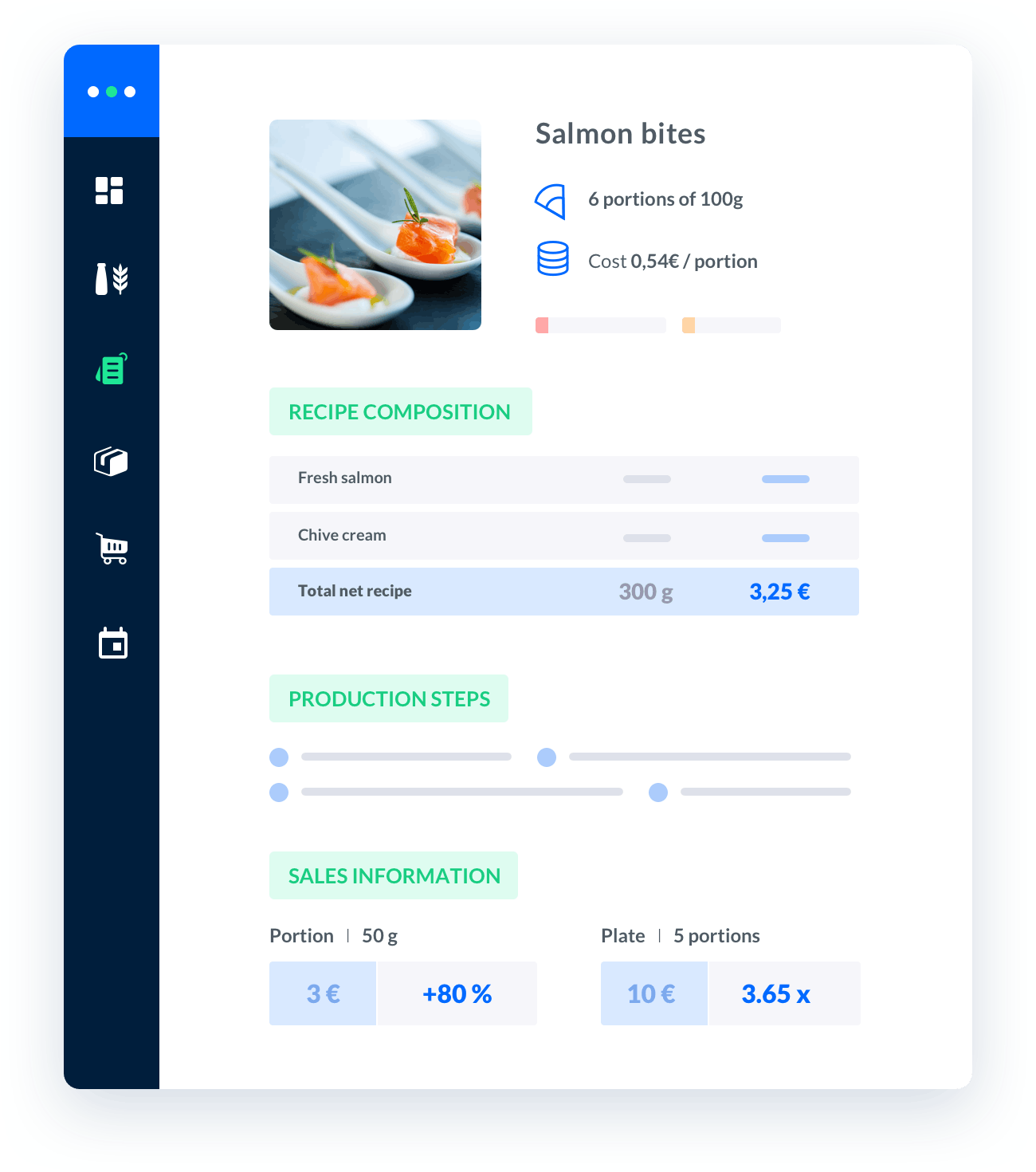labor cost per meal
When it comes to calculating labor costs per meal in the catering industry, it is essential for professionals to have a clear understanding of various factors that contribute to these expenses.Labor costs play a significant role in determining the overall profitability and success of any catering business.

Melba: the food cost app to optimize the profitability of your restaurant
Discover how to optimize the profitability of your restaurant with melba

The ultimate guide to food cost restaurant
Learn more about the food cost basis and how to reduce your food cost percentage
When it comes to calculating labor costs per meal in the catering industry, it is essential for professionals to have a clear understanding of various factors that contribute to these expenses. Labor costs play a significant role in determining the overall profitability and success of any catering business. This comprehensive guide aims to provide real and valuable information on labor costs per meal, helping professionals in the catering industry make informed decisions.
Understanding Labor Costs in the Catering Industry
Before delving into the specifics of labor costs per meal, it is crucial to comprehend the broader concept of labor costs in the catering industry. Labor costs refer to the expenses incurred by businesses in hiring and compensating their employees, including wages, benefits, and payroll taxes. In the context of the catering industry, labor costs are directly related to the number of hours worked by employees involved in meal preparation, service, and other related tasks.
Calculating labor costs accurately is vital for catering professionals as it helps them determine the profitability of their operations, set competitive pricing, and optimize resource allocation. By understanding the labor costs per meal, professionals can make informed decisions and take necessary steps to enhance efficiency and maximize profits.
Factors Influencing Labor Costs per Meal
Several factors contribute to the calculation of labor costs per meal in the catering industry. It is important to consider these elements to estimate costs accurately and manage them effectively. The key factors influencing labor costs per meal are:
- Menu Complexity: The complexity of the menu directly affects the labor required for meal preparation. Elaborate menus with intricate dishes and multiple courses may require a larger workforce and, consequently, higher labor costs per meal.
- Meal Volume: The number of meals to be prepared within a given time frame significantly impacts labor costs. Higher meal volumes often require additional staff or longer working hours, resulting in increased labor expenses.
- Skill Level: The skill level and experience of the catering staff also play a crucial role in determining labor costs per meal. Highly skilled chefs and professionals may command higher wages, increasing overall labor expenditures.
- Service Style: The service style chosen by the catering business, such as buffet, plated, or family-style, affects the labor requirements. Each service style has different staffing needs, impacting labor costs accordingly.
- Efficiency and Organization: Efficient processes, streamlined workflows, and effective organization can significantly impact labor costs per meal. Well-structured operations allow for better resource utilization and lower labor expenses.
Calculating Labor Costs per Meal
To calculate labor costs per meal accurately, catering professionals need to follow a systematic approach. Here are the steps involved in calculating labor costs per meal:
Step 1: Determine Total Labor Hours
Begin by calculating the total number of labor hours worked during the meal preparation and service. This includes the hours worked by chefs, cooks, servers, and any other staff involved in the catering process.
Step 2: Calculate Labor Cost per Hour
Next, determine the average labor cost per hour by dividing the total labor expenses (wages, benefits, and taxes) by the total number of labor hours worked. This will give you the labor cost per hour.
Step 3: Estimate Labor Hours per Meal
Estimate the number of labor hours required to prepare and serve a single meal. This estimation should consider factors such as menu complexity, meal volume, and service style.
Step 4: Calculate Labor Cost per Meal
Multiply the labor cost per hour (from Step 2) by the estimated labor hours per meal (from Step 3) to obtain the labor cost per meal. This calculation provides an accurate representation of the labor expenses associated with each meal.
Strategies to Manage Labor Costs
Effective labor cost management is essential for catering professionals to maintain profitability and competitiveness. Here are some strategies that can help in managing labor costs:
1. Workforce Optimization
Optimize your workforce by analyzing labor patterns and scheduling employees efficiently. This includes aligning staff schedules with peak hours, cross-training employees, and utilizing technology to automate certain tasks.
2. Menu Engineering
Conduct a thorough menu analysis to identify the most profitable and popular dishes. Streamline your menu to focus on high-margin items while minimizing complex dishes that require excessive labor. This allows you to optimize labor costs without compromising on quality.
3. Training and Development
Invest in training and development programs for your catering staff to enhance their skills and productivity. Well-trained employees can perform tasks more efficiently, reducing labor hours and costs per meal.
4. Streamline Operations
Regularly review and streamline your operational processes to eliminate inefficiencies and reduce labor waste. Implement technology solutions, such as inventory management systems and automated workflows, to enhance productivity and minimize labor-related expenses.
5. Pricing Strategy
Implement a strategic pricing strategy that considers labor costs, ingredient costs, and desired profit margins. Ensure your menu prices reflect the labor-intensive nature of certain dishes, helping you cover labor costs while remaining competitive in the market.
By adopting these strategies and closely monitoring labor costs per meal, catering professionals can optimize their operations, improve profitability, and deliver exceptional dining experiences to their clients.






